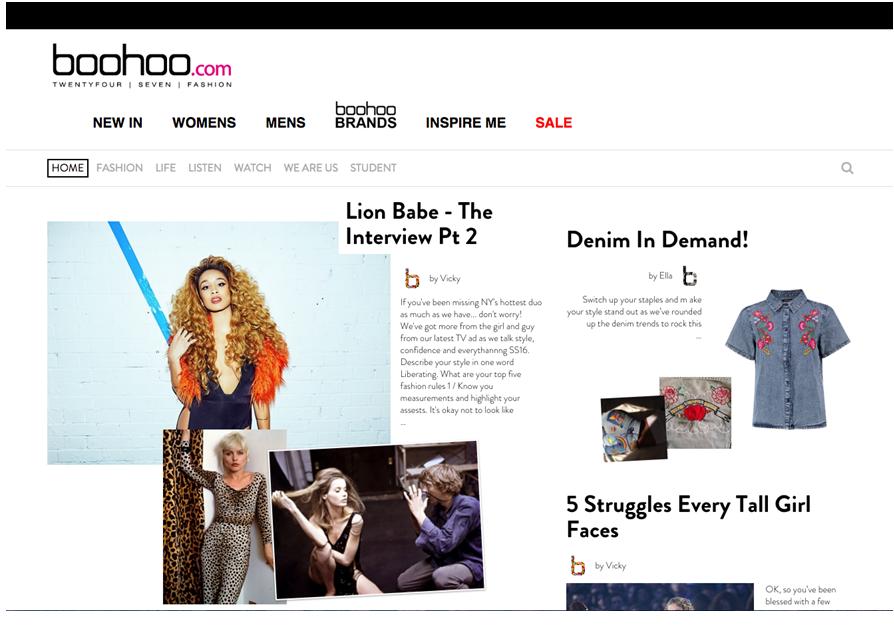(c)iStock.com/supergenijilac
Retail is changing rapidly evolving social, and consumer behaviour and mobile specifically are placing a focus on content and driven by channel convergence. Not catalog or product material, but engaging content experiences – editorial, user generated, societal and so forth. This is the material which linked consumers share and seek out — and, as a consequence, it content that could have a dramatic impact on brand participation and sales.
Really there’s absolutely not any doubt as to the importance of content in driving operation. Quite simply, the brands together with the content, convert more – but robust content performance also underpins improvement in brand metrics around consciousness and engagement.
The advantages of content aren’t confined to electronic channels. They also drive in-store interaction and earnings — and also also to a significant level. According Deloitte Digital’s Digital Divide report to:
- More than 60% of in-store purchases are now affected at some point by digital content, 84 percent of in-store shoppers report utilizing digital for purchasing related tasks prior to or during their most recent trip to a store
- Consumers Using a device during their purchasing journey convert in a 40% greater rate
- 22% of customers spend more in-store as a result of utilizing digital, just more than half pay at least 25 percent more than they had intended
Taken together these figures leave little room for doubt – content is a critical influence on 30-50% of sales transactions in all stations.
Attain, endurance and quality
As a result, those retailers who succeed in enhancing content performance will probably drive returns in terms of overall business performance — a fact that has not escaped the attention of merchants.
Promotion is the dominant type of activity throughout the spectrum of merchants. It is likely that content advertising accounts for well over half of their marketing mix — with seen its share rise to 37% in 2013 from 19% of action in 2012.
But, spending isn’t a guarantee of success. The nature of omnichannel retail ensures there is a approach critical – one based on a true understanding of the obstacles that stand in the way, as well as the problems that drive content performance.
In nature, a retailer content performance: Attain, endurance and quality is dictated by three factors:
- Attain: Is articles being delivered to all markets, through all channels?
- Quality: Is the consumer travel engaging and fluid?
- Agility: How quickly can content be refreshed, to accommodate new trends?
What is apparent is that improvement across each of those variables delivers significant upsides in commercial, turn and brand metrics and, concerning content performance.
It’s a challenge to deliver all 3 factors. Retailers are having quality enhancements coming at the expense of agility and reach, reach at the cost of quality, and enhance a couple of aspects at the expense of others — to strike a balance and so on.
The result sees gains accrued from improvements in 1 area eroded by functionality in a different — and theses limits are clearly exhibited from the very first Amplience Big Content Index.
Trainers and Trainers
According to assessment, the Amplience Big Content Index assesses apparel retailers and the UK’s top 79 fashion. It allots each a content score, which enables comparison and benchmarking across five dimensions: selling tools, rich media, social networking, UGC and content material.
The results point with the average across all 79 retailers standing at 41%, and the lowest scores at 24 percent.
The top ten merchants typical 55%, therefore even the greatest actors have opportunities to cultivate their articles scores — a proxy for their effectiveness to drive brand participation and performance that is commercial.
The need for retailers to strike a balance, and make compromises was evident. None of the top 10 score across all five dimensions — a editorial rating compensating for a non UGC performance, etc. This lack of consistency, coupled with the low scores highlights the large Content challenges confronting all retailers in the complicated, omnichannel atmosphere of today.
That is, not one of the style and apparel retailers assessed here will deny the significance of articles, of media, of social websites, directed selling tools and UGC. Nevertheless, it might seem that many still need to achieve the capacity to deliver them efficiently — to leverage them for commercial success by placing them at the center of the new experience also, crucially, the journey to checkout.

Enormous content challenges
The Big Content Index reveals how few retailers are successful in embracing the digital content revolution — in a ‘lifestyle-driven’ industry like fashion & apparel. But these shortcomings are a matter of decision or strategy.
The fact is most retailers are hamstrung with a collection of channel-specific content and tools siloes — a material sophistication problem that pushes costs up and makes it impossible to improve content quality, achieve and agility.
In response, automate locale and channel syndication retailers need to find ways to combine channel-specific siloes and options, to enhance excellent content creation, and alter the economics of content.
Only then will they have the ability to work all of the angles — agility, quality and reach — to get the content abilities which will be important to success.

